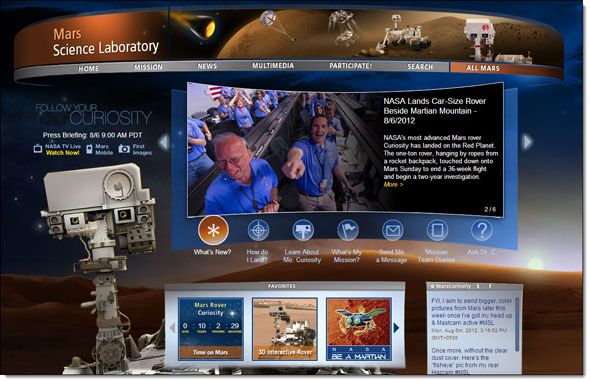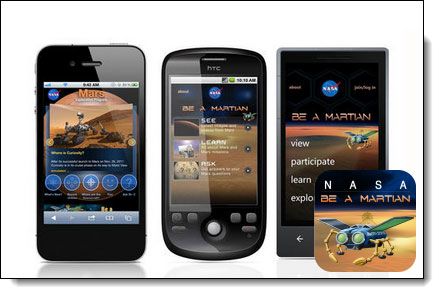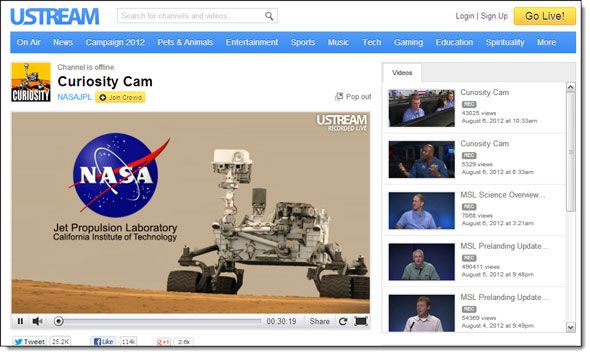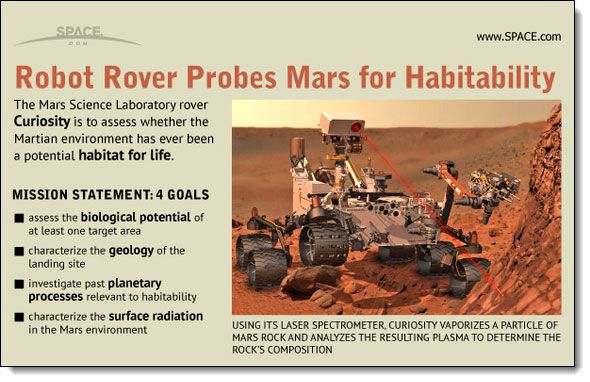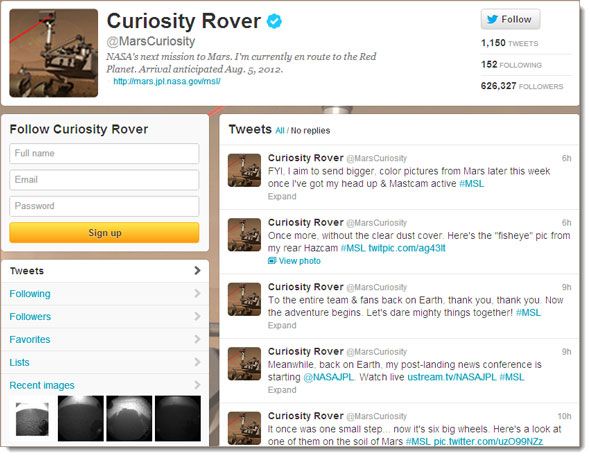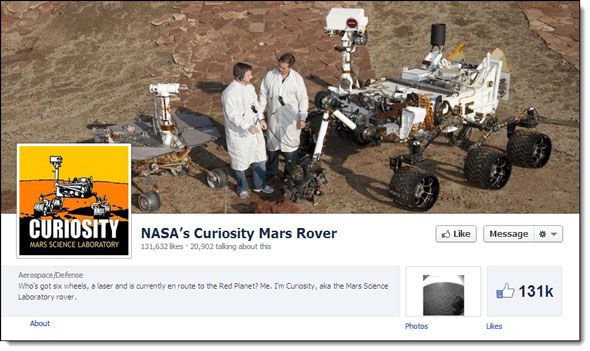They are calling it the most significant event since Neil Armstrong imprinted his nine plus sized footprints on the moon. Then, it momentarily pushed aside Usain Bolt from the headlines. So, I guess when you land a ton of space age equipment worth two and a half billion dollars on an inhospitable patch of red rock that’s 54.6 million kilometers at its closest to Earth, it does indeed become a big deal.
So, let’s rejoice because the Curiosity rover overcame the eight months space hop and the seven minutes of terror to land safely on Mars. Now, it will go about its business of finding out if Martians really exist…or at least their microbial forms. The car-sized super-advanced robot on wheels will search for extra-terrestrial organic clues of life. Its two year mission could give us a few clues to the second biggest question of all time – are we alone out here?
So, buckle up and keep yourself plugged into these five sources to follow Curiosity and its Mars mission. Just in case the answer is found.
Mars Science Laboratory
This is the online home of the Curiosity rover and its mission page. You can be pretty sure that all updates will come here first. As the site says – Follow Your Curiosity, if you want to know more about the Mars mission. Go through the buttons /links just below the central image to learn the intricate details of how this advanced scientific laboratory on wheels was conceived, and the challenges of making a one ton box of space age metal land on the Martian surface. Check out the slideshow on Curiosity first. Then, there’s Dr. C who can answer any queries you might have.
The Multimedia section of the site brings you an expanding collection of pictures on the mission. As an educator or student, you can use the freely available interactives to participate in the mission to Mars. Download the Curiosity brochure from the Participate page.
You can also follow the latest thanks to the smartphone apps (Android, iPhone, and Windows Phone) that are collectively called Mars Mobile. All are free.
Curiosity Cam (UStream)
UStream is an independent life-casting video streaming site that is used by NASA to broadcast major events, mission reports, and news conferences. You can watch broadcasts here and also on NASA TV, the official broadcast channel. The advantage of UStream is that you can log-in and chat online around the video.
Space.com
Space.com is one among the leading websites for the latest outer space and science news. It has continually followed the Curiosity rover through its journey and will continue to do so with special reports, updates, images, and videos. It in fact is counting-up the mission with a timer on the special report page. Check out the infographic on Curiosity, a slice of which is displayed in the screen above.
Yes, that one ton nuclear truck has a Twitter account and already more than half-a-million followers. And from the looks of it, it is tweeting fairly regularly even from the Martian surface! This is definitely the quickest and briefest way to keep yourself updated about Curiosity’s progress on an hour to hour basic. Don’t expect it to be like a celebrity who tweet every waking second. It takes 14 minutes for any update to be relayed to mission control from the Martian surface because of the distance between the two planets. Do keep checking the Twitter image gallery though for latest images that gets uploaded.
Curiosity (and NASA) knows how to promote itself. All for the sake of the scientific spirit I guess. Social media is definitely the way to go if you want to touch young minds. 'Like' the Facebook page if you would rather be on Facebook than on Twitter.
As you can guess, all the information flows from the one mission page of the Curiosity rover. These options just give you different ways of keeping in touch according to your convenience. It’s going to be a two year journey, and who knows it could go beyond that too. Yes, it won’t find green Martians walking about, but even specks of discoveries should make for interesting reading. What do you think? Are you following humankind’s latest great adventure?
Image Credit: Wikimedia Commons


